
Restoring and Painting a US M1 Helmet with Crushed Cork Texture
The US M1 helmet is an iconic symbol of military history, and many enthusiasts seek to restore and customize it. In this article, we will explore a unique method to give a distinctive touch to your US M1 helmet by using a crushed cork texture during the painting process. This technique not only provides an authentic appearance but also offers advantages in terms of stealth and sunlight reflection.
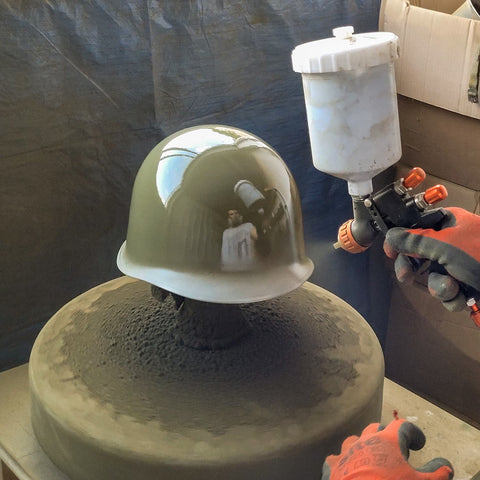
First coat of paint on a helmet shell
The Advantages of Crushed Cork Texture
By mixing crushed cork with paint, the helmet loses its smooth appearance and gains a rough texture. This reduces sunlight reflection, thereby improving the soldier's stealth in the field.
Helmet Preparation
Prior to applying the crushed cork texture to your US M1 helmet, it is crucial to properly prepare it to ensure optimal results. Preparation involves stripping the existing paint, which can be done using different methods depending on your needs. Among these methods, the use of chemicals or mechanical sanding are commonly employed. A popular professional method for this step is aerography.
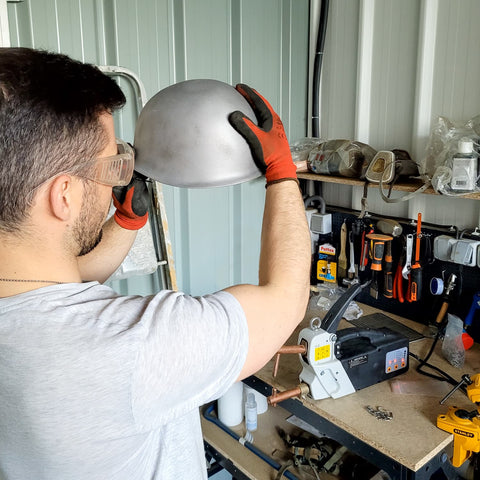
Sanded helmet ready for painting
Aerography is a paint stripping process that combines compressed air and abrasive media to effectively remove the helmet's paint. The abrasives used may vary depending on the type of paint to be removed and the helmet's specifications.
It is important to note that each preparation method has its advantages and considerations. It is recommended to choose the method that best suits your needs and follow appropriate safety instructions when using chemicals or mechanical tools.
Application of Crushed Cork Texture
Once your US M1 helmet is prepared, it's time to apply the crushed cork texture to achieve a unique and distinctive look. Here are the steps to follow for this crucial restoration step:
- Apply a first coat of fresh paint: Before adding the crushed cork texture, make sure to apply a layer of fresh paint to the helmet. This will provide a smooth base and allow the cork texture to adhere better.

Apply a uniform and sufficiently thick coat of paint
- Use a container with a perforated lid: To evenly sprinkle the crushed cork onto the fresh paint, you can use a specially prepared container. Ensure that the container's lid is perforated to allow for even dispersion of the cork.
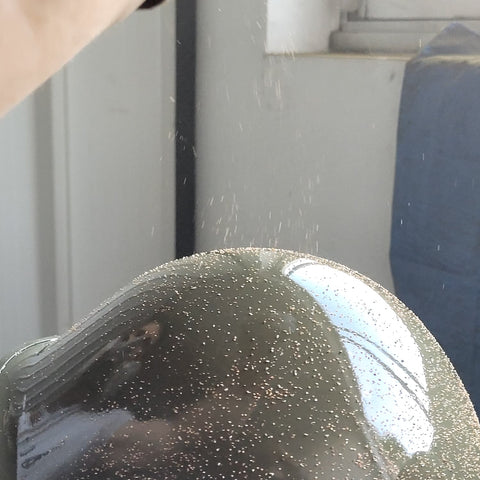
The cork is sprinkled onto the fresh paint
- Sprinkle the crushed cork onto the fresh paint: Hold the container above the helmet, ensuring an appropriate distance. Sprinkle the crushed cork evenly and consistently, allowing it to settle onto the fresh paint. Let the cork fall from the container so that it spreads uniformly across the entire surface of the helmet.
When applying the crushed cork texture, it is essential to aim for an even distribution to achieve a consistent and authentic look. Ensure an adequate distance between the cork container and the helmet to allow for optimal dispersion. Keep in mind that different sprinkle heights can create distinct visual results, so experiment to achieve the desired effect.
Application of the final paint layer and finishing
Once the crushed cork has been sprinkled and deposited onto the first coat of fresh paint, it's time to apply the final paint layer to secure the cork and achieve a harmonious result. Here are the steps to follow:
- Use an aerosol paint in the chosen original color (olive drab or khaki) to cover the cork and the first coat of paint. Make sure to apply a thin, even layer of paint across the entire surface of the helmet. It's important not to overload the helmet with paint as the first coat of paint is still fresh, and the cork needs to be delicately secured.
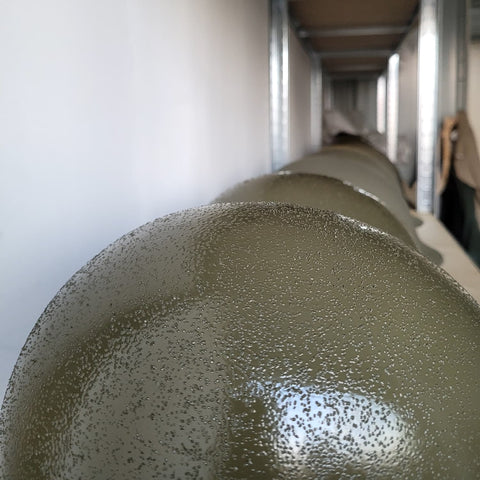
The appearance of a helmet once the cork is covered in paint
- Allow the final paint layer to dry for at least 24 hours. Make sure to leave enough drying time for the paint to adhere and securely fix the cork.
- After the 24-hour drying period, you can add a second coat of paint if necessary. Typically, two additional coats of paint are sufficient to adequately secure the cork, but you can add more coats based on the desired outcome. Allow each coat of paint to dry for at least 24 hours before applying the next layer.
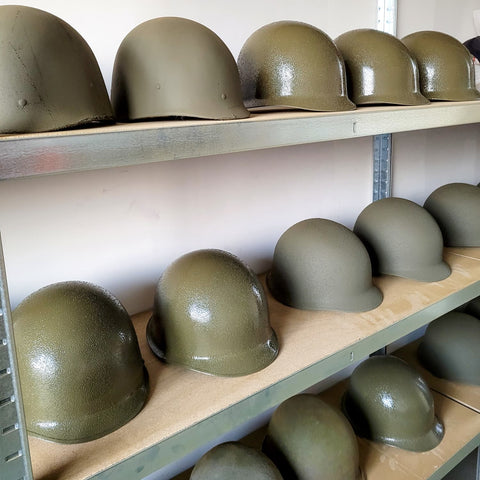
Drying phase of US M1 helmets
Don't forget to paint the interior of the helmet shell if you have stripped it during the restoration process. Make sure the interior is also covered with a coat of paint in the original color.
Once all the paint layers are dry, the helmet is complete and ready to be used or displayed. You can now attach a pair of chinstraps to the bales of the helmet for a finished look.
Conclusion
Restoring and customizing a US M1 helmet with crushed cork texture can give a unique and distinctive look to your gear. By following the method described in this article, you can create a rugged texture and add an authentic touch to your helmet. Remember to properly prepare your helmet before applying the texture and follow the application steps for a uniform finish. Enjoy this creative process to bring your US M1 helmet to life and make it truly one-of-a-kind.
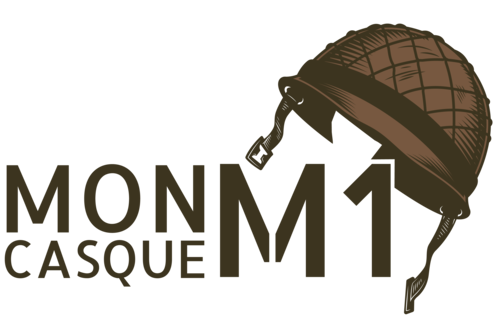
1 comment
ou peut on trouver du liège broyé